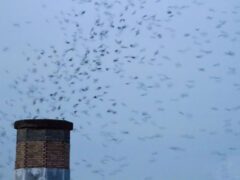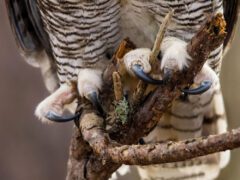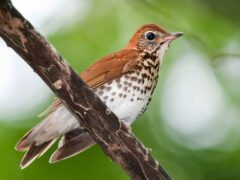The Four Keys to ID
- Size & Shape
A small, delicate songbird, with a shallowly forked tail and a short, conical bill. The upper part of the bill is more curved than in other buntings.
Relative Size
Larger than a Verdin, smaller than a Western Tanager.

 sparrow-sized or smaller
sparrow-sized or smallerMeasurements
- Both Sexes
- Length: 4.3-5.5 in (11-14 cm)
- Weight: 0.4-0.5 oz (11-13 g)
- Wingspan: 8.3 in (21 cm)
© David Hollie / Macaulay Library
- Color Pattern
- Behavior
- Habitat
Regional Differences
Ornithologists recognize four very similar subspecies, two of which reach into the United States as breeders: the pale-billed versicolor, which nests from Texas into eastern New Mexico, and the darker-billed dickeyae, which nests in southeastern Arizona and western New Mexico. Adult dickeyae males have a more distinct red hindcrown patch and darker underparts than in versicolor. Subspecies pulchra is resident on the southern Baja California peninsula, and the smaller, darker purpurascens has been described as resident from Chiapas, Mexico, into Guatemala.






















